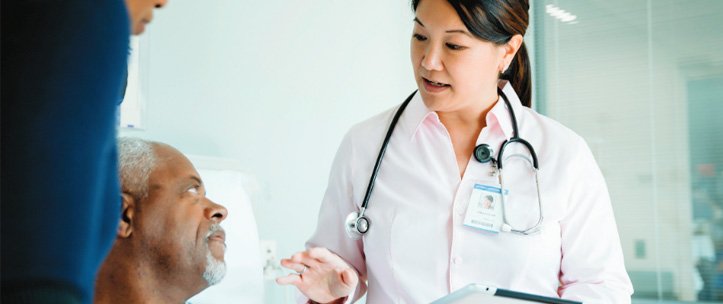Vascular Health Equity Academy Educational Resource Library
Categories
- Abdominal Aortic Aneurysm
- Aortic Dissection
- Blood Clots
- Buerger’s Disease
- Carotid Artery Disease
- Cerebrovascular Disease
- Chronic Limb-threatening Ischemia
- Congenital Vascular Malformation
- Coronary Artery Disease
- Course
- Deep Vein Thrombosis
- Diabetes
- Exercise
- Flyer
- Folletos en Español
- Health
- Healthy Habits
- Lymphedema
- Neuropathy
- Peripheral Artery Disease
- Portal Hypertension
- Prevention
- Pulmonary Embolism
- Raynaud's Disease
- Research Engagement
- Smoking Cessation
- Varicose Veins
- Venous Thromboembolism
We’re the Foundation to Advance Vascular Cures, a nonprofit organization dedicated to transforming health outcomes and well-being for all through patient-centered research, empowerment, and collaboration in vascular health. Our team of physicians, nurses, public health specialists, caregivers, and patients is excited to bring you the courses, flyers, and other resources that are part of the Vascular Health Equity Academy.
The Foundation to Advance Vascular Cures’ Patient Partners helped design and review our resources to make sure the information is focused on the patient experience. These resources are designed to help patients better understand their condition and empower them to ask questions and share concerns with their healthcare providers.
If you are a healthcare professional or community-based organization interested in distributing our educational materials, please fill out our material use request form.

Lymphedema
Lymphedema is a common cause of leg or arm swelling due to fluid collecting in those areas. The swelling is usually not painful, but it may cause a heavy, aching discomfort. It can limit…

Ischemia and Chronic Limb-Threatening Ischemia
Ischemia (is-KE’me-ah) is a serious condition in which there is inadequate blood flow and oxygen to a specific part of the body. It can occur anywhere blood flows including the limbs…

Deep Vein Thrombosis (DVT)
Deep vein thrombosis (DVT) happens when a blood clot forms in a large vein. These clots usually develop in the legs or pelvic area. Some DVTs don’t hurt, but others can be quite painful. With…

Compression Therapy
When the body retains fluid in a specific area, such as the legs, arms, or abdomen, the subsequent swelling is referred to as edema. If you have edema, compression therapy may…

Congenital Vascular Malformation
Congenital vascular malformations (CVMs) are growths or birthmarks made up of blood vessels that have not developed correctly. They occur in 1% of all births.

Carotid Artery Disease
The carotid arteries are blood vessels that carry oxygen-rich blood away from the heart to the brain. Carotid arteries are important because they supply blood to the part of the brain that controls…

Buerger’s Disease
Thromboangiitis obliterans (TAO), also known as Buerger’s disease, is a rare disease that occurs when smaller arteries and veins in the arms and/or legs become inflamed. This frequently leads...

Blood Clots
The medical term for blood clots in the veins is venous thromboembolism (thrahm-bö-EM-bö-lizm), or VTE. This describes two related conditions that are serious but highly preventable…

Aortic Dissection
The aorta is the largest artery of the body. It delivers oxygenated blood from the heart to the rest of the body. Aortic dissection (AD) is a rare but serious injury to this artery...

Ankle-Brachial Index
The ankle-brachial index (ABI) is a simple, low-cost test for diagnosing peripheral artery disease (PAD). You can get this test in a doctor’s office or lab. The technician will measure…

Abdominal Aortic Aneurysm
The aorta is the main artery of the chest and abdomen that carries blood from the heart to other areas in the body including the legs and feet. An aneurysm occurs when you have bulging of an...

PAD/CAD Virtual Learning Hub
COURSE AVAILABLE! The PAD/CAD Virtual Learning Hub is an engaging multi-channel online resource dedicated to arming HCPs of all levels of expertise with the knowledge and tools necessary to keep up with the latest advances in the field and improve patient care.

An Overview of Medical Research and Engagement
COURSE AVAILABLE! This module will provide you with an overview of research as it relates to medical discovery and patient outcomes. Later in the module, we’ll discuss how patients and caregivers can engage in research to improve the process and findings.

Overview of Chronic Limb-threatening Ischemia
COURSE AVAILABLE! This module provides an overview of Chronic Limb-Threatening Ischemia, also called CLTI. It breaks down the causes, risk factors, symptoms, treatments, and outcomes.

Patient Engagement 101
COURSE AVAILABLE! A 2017 study published in the Studies in Health Technology and Informatics reports that when you're involved in making your health care decisions, you'll usually have higher levels of satisfaction with your care and less anxiety. But how can you engage in your care? Take this three-lesson course to learn how to proactively engage with your healthcare!

Overview of the BEST-CLI Study
COURSE AVAILABLE! The BEST-CLI Study is an eight-year study that tested two types of treatment. The study focused on patients with Chronic Limb-Threatening Ischemia, also known as CLTI. In this module, learn more about the study and its results.

Understanding Diabetes and Vascular Health
COURSE AVAILABLE! This patient-centered module is an educational resource on the relationship between diabetes and vascular disease. Many vascular and cardiovascular diseases share risk factors and symptoms with Type II diabetes. Through this module, you can learn about these and possible lifestyle changes that lower your risk for both vascular diseases and Type II diabetes.

Beginning Exercise for Vascular Health
COURSE AVAILABLE! This free course explores how to build a workout habit, how to create a walking routine for patients with Peripheral Artery Disease, and alternatives to walking for patients with Peripheral Artery Disease and other conditions. Check it out!

Fumar y la EAP
Fumar es una de las principales causas de enfermedades cardiacas, cáncer y enfermedades pulmonares, y la principal causa de enfermedad arterial periférica (EAP).

La presión arterial alta y la EAP
La presión arterial es una medida de la fuerza del flujo sanguíneo dentro de las paredes de las arterias (vasos sanguíneos que transportan la sangre fuera del corazón). Se mide en milímetros de mercurio, o mmHg.
Glossary
This glossary can help you better understand vascular diseases and terminology. Access the glossary to help define any words above.
Filter by Category
- Abdominal Aortic Aneurysm 1
- Aortic Dissection 2
- Blood Clots 5
- Buerger’s Disease 1
- Carotid Artery Disease 1
- Cerebrovascular Disease 1
- Chronic Limb-threatening Ischemia 5
- Congenital Vascular Malformation 1
- Coronary Artery Disease 1
- Course 10
- Deep Vein Thrombosis 2
- Diabetes 2
- Exercise 4
- Flyer 20
- Folletos en Español 9
- Health 2
- Healthy Habits 8
- Lymphedema 1
- Neuropathy 1
- Peripheral Artery Disease 15
- Portal Hypertension 1
- Prevention 1
- Pulmonary Embolism 1
- Raynaud's Disease 1
- Research Engagement 3
- Smoking Cessation 3
- Varicose Veins 1
- Venous Thromboembolism 1

